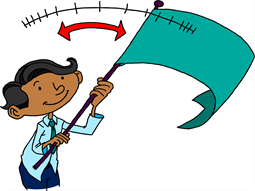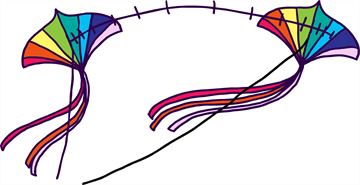- Modules
- Animation Principles
- Follow Through Principle
Follow Through Principle
T-PRIN-004-006
The Follow-Through principle is very important for increasing the quality of your animation. All the secondary parts of your character such as hair, clothes or a cloak will continue moving after the character stopped moving. It also connects with the Drag and Overlap principles. Also if you observe closely, when a character walks, its body moves and down, and its long hair or cloak follow behind on the same path but with a slight delay. Therefore, your character might be at the lowest point in a crouching action but his cloak will be all the way up in the air. Also, notice that when the cloak floats behind the character, it will move along an "S" curve. The part of the cloak that is attached to the body will not always curve in the same direction as the tip of the cloak.

- Adding drag and overlapping action to your animations will go far in making them look less mechanical.
- When a fully developed character runs, not all of his body parts move with the same speed. The differing characteristics of various body parts or pieces of clothing, such as ears or a cape, might cause them to move behind the rest of the body. This is called a "drag".
- When a character stops moving, not all of the body parts or the things your character is holding will stop at the same moment. The feet might stop first, with the ears and the cape continuing on until they reach the limit of their extension and then come to a stop. This is called "overlapping action".

You can demonstrate this concept by thrusting out your arm with a light object in it, like a shirt or a piece of dangling fabric, and watch as it lags behind and then swings in front of your fist.

Time Estimated 10 mins
Difficulty Level Beginner
Topics List
- Introduction to Animation Principles
- Squash and Stretch Principle
- Timing Principle
- Anticipation Principle
- Straight Ahead and Pose-to-Pose Principle
- Follow Through Principle
- Arcs of Rotation Principle
- Slow-in and Slow-out Principle
- Secondary Action Principle
- Exaggeration Principle
- Solidity Principle
- Activity 1: Experimenting with Space and Time
- Activity 2: Drawing a Pendulum
- Activity 3: Animating the Playground (Optional)
- Activity 4: Observation and Timing
- Activity 5: Drawing a Bouncing Basket Ball and Bowling Ball
- Activity 6: Animating a Bouncing Ball with a Tail